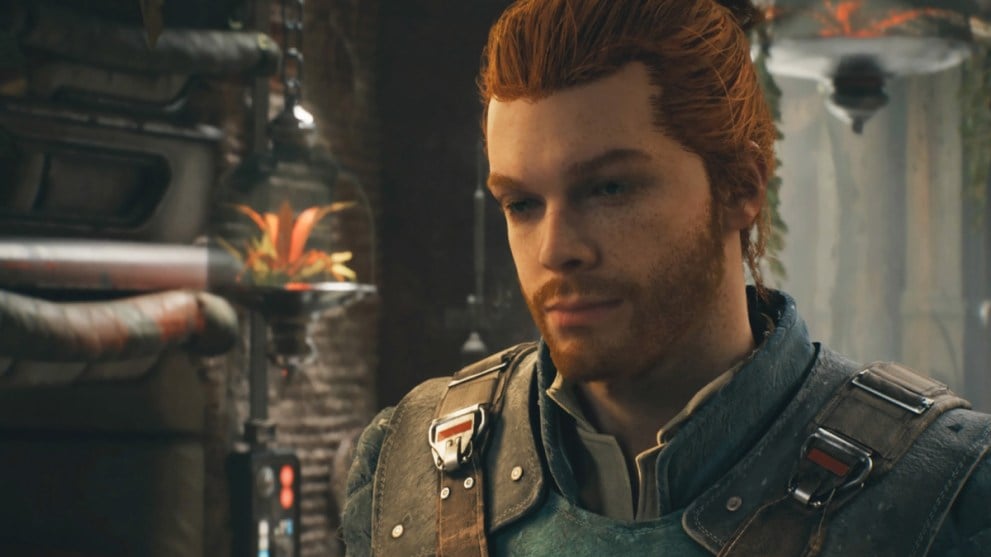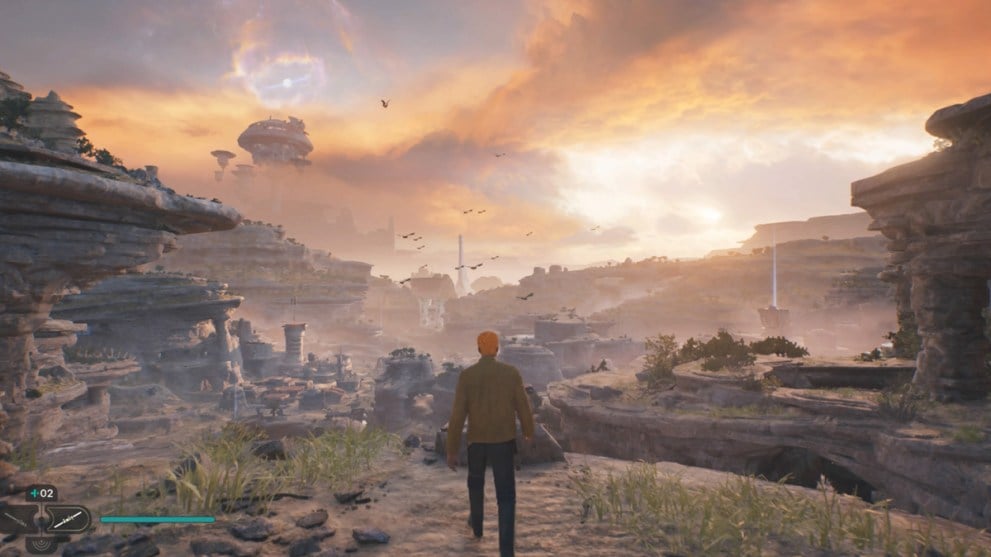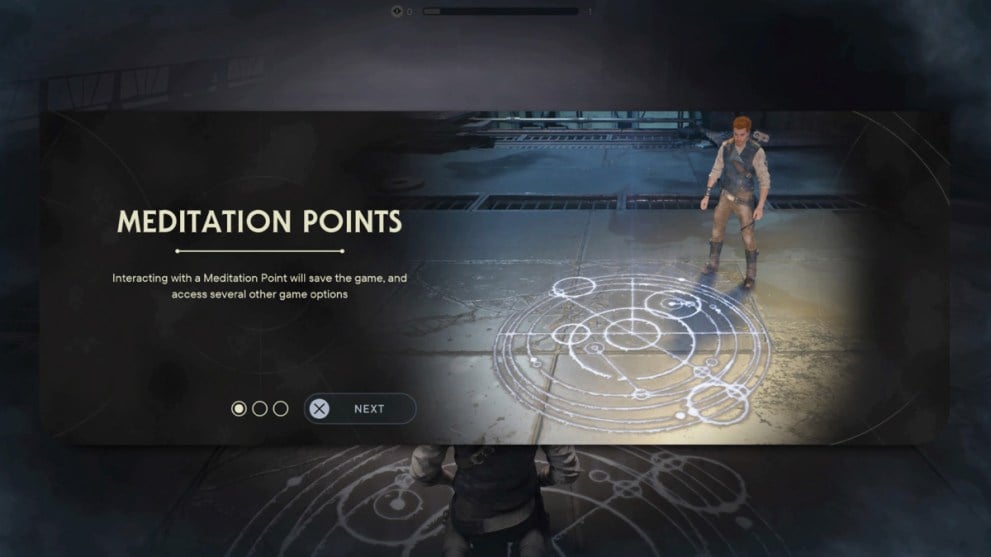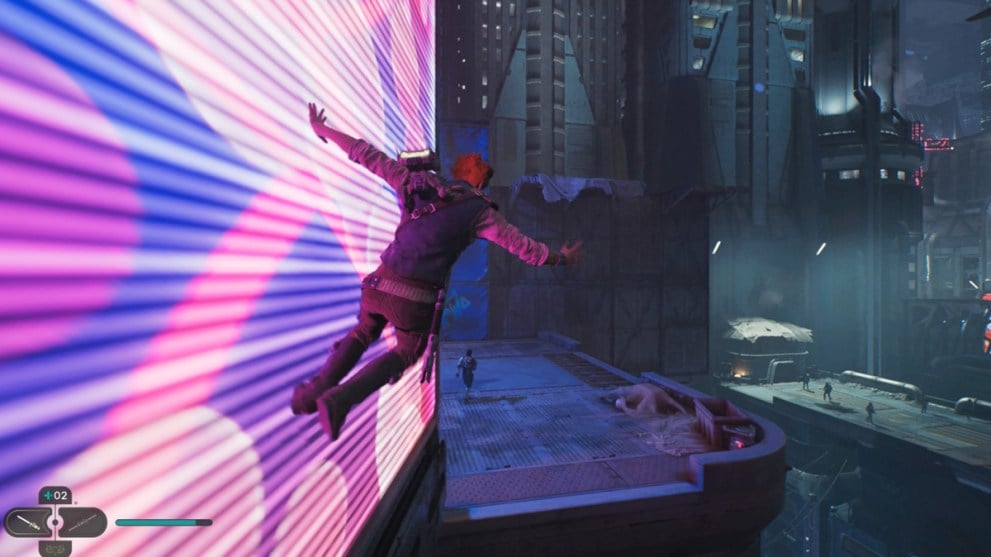Star Wars Jedi: Survivor on PS5
It is, in many ways, an unprecedented time to be a Star Wars fan. Disney’s commitment to releasing new Star Wars TV shows and movies with such frequency that oversaturation concerns are legitimate meant I approached Star Wars Jedi: Survivor with a mix of excitement and skepticism. The game’s predecessor, 2019’s Star Wars Jedi: Fallen Order, was a strong entry and satisfied the IP’s gaming fan base adequately, but I did have questions over whether a successor relatively soon after was necessary. These concerns have certainly been compounded to some extent by news that EA’s exclusivity partnership with LucasFilm will expire later in 2023; meaning the future of AAA Star Wars releases has been slightly muddied.
It’s also why I’m so delighted to report that Star Wars Jedi: Survivor is a tangible improvement on Fallen Order in every way, and makes the case for further installments under Respawn Entertainment’s hand better than any exclusivity deal or litigatory partnership ever could.
A Star Wars Story
A strictly single-player game, players pick up the story of Jedi protagonist Cal Kestis roughly five years on from the events of Fallen Order. As with his first appearance, Cal’s fast-talking and jocular nature instantly endears players to his plight, but as the narrative progresses his humorous defenses are peeled back to reveal a slightly lost and lonely character. With the Empire’s grip on the Galaxy still unyielding, Cal is a hero searching for where he belongs within it – and how he can find out while continuing to oppose the Dark Side. It’s a refreshingly complex arc and I found myself genuinely invested in cutscenes as I approached the game’s climax.

He’s joined by a typically diverse and eclectic ensemble, consisting of some characters we’ve seen before and some that are fresh additions. It’s probably best to remain vague in this regard, but fans can rest assured that, like Fallen Order and much like players want from their Star Wars adventures, it’s a fast-paced, planet hopping narrative filled with likeable and varied characters. BD1 is among those to return, with the adorable droid’s abilities growing integral to Cal’s progress in a welcome manner. Greez Dritus also makes a reappearance, acting as a pilot to facilitate Cal’s travels all across the Galaxy.
Not every subplot lands with the weight of Cal’s arc, nor is every side character characterized to a comparable degree. It’s by no means underwhelming in this regard but there were missions, travels and adventures where side characters would arbitrarily refuse to accompany Cal, or make the trip only to stay on the ship and fail to contribute.
Where the main narrative is typically Star Wars-y and built around a strong protagonist, it’s simultaneously unafraid to pivot unexpectedly. I found myself incorrectly predicting upcoming events; instead being stunned by a major reveal or plot twist. The aforementioned climax is suitably grandiose to wrap up a AAA blockbuster but, from a character and narrative perspective, leaves players perfectly suspended between emotional gratification and craving another adventure. Boss battles scattered throughout provide opportunity to trial new skills and upgraded abilities, with many offering incredible set pieces to wrap up.
On my first playthrough, which came in at just over 27 hours, I was consistently engaged by the overarching story – and even found side quests enjoyable departures from tearing through Droids and Stormtroopers. Whether I was working my way through a series of Bounties to satisfy a shady NPC, doing a spot of gardening or solving environmental puzzles in Breath of the Wild style, there’s something for players of all calibers and persuasions. It may have been a playthrough flirting with the thirty hour mark, but at no point did I feel as if I’d come close to completing everything I could – or wanted to – do.

Class Combat, Comprehensive Customization and Exhaustive Exploration
Much like the story and central figures, the gameplay of Jedi: Survivor has been leveled up across the board. Combat remains brilliantly intuitive, toeing the line between freedom and support nicely. It never stopped being enjoyable to throw a downed Stormtrooper’s shield at one of their nearby colleagues, nor did it become tiresome to throw enemies off tall cliffs and hear something akin to a Wilhelm scream on their descent.
It’s remarkably adaptable as well, letting players invest frequently earned Skill Points into three areas to level up Cal Kestis: Survival, Force and Lightsaber. Wherever you choose to spend your SP, it reaps undoubted reward in combat, especially when I intentionally adapted my approach to springboard off the upgrades I’d just made. If I upped my max health prior to a boss battle I’d know I could take a more aggressive approach, if I mastered a new Force trick to stun multiple foes at once I’d spring this on unsuspecting enemies when I could.
It’s complemented by five distinct Stances players can equip for combat. Where Fallen Order offered single blade or double blade options, Survivor adds Crossguard, Blaster and Dual Wield. The result is consistent innovation to combat, ensuring the 25th hour of working my way through Stormtroopers was no less engaging than the fifth. I found myself particularly drawn to the Blaster Stance, letting me incorporate a weapon into lightsaber battles to deal damage when further away from my enemy and recovering.
The Crossguard Stance – a nod to Kylo Ren of the sequel trilogy – was also enjoyable because of the power it granted, but I found myself reluctant to rely on it because of the cost to stamina and speed. This is another positive; players are able to opt for a stance and upgrade based on how they want to play. Each brings its own positives and negatives, perhaps reducing range while increasing damage or vice versa. It lets players customize their playstyle, equipment and upgrades how they want to, bringing unprecedented levels of combat freedom to a Star Wars title. If that wasn’t enough, I found myself perfecting combos with allies who joined me for combat, taking out bosses in creative and satisfying ways.
The gameplay and exploration are anchored by Meditation Points; de facto checkpoints that offer players the chance to recuperate and reevaluate their Stances, Abilities, aesthetics and Rest back to full health. Doing so also respawns all nearby enemies, a la Soulsborne bonfires, meaning it’s a nice balance of risk and reward. They’re frequently placed and allow players to Fast Travel between two discovered Points, ensuring players won’t have to redo tiresome treks or waste time retreading their own steps.

There’s shades of Respawn’s Apex Legends in the environments players visit – colorfully rendered and often beautiful. They’re well designed too, tasking players with using their own intuition to identify entry points, climbable walls and traversable areas. It’s brought to life by some of the best movement I’ve experienced in a game.
Alongside the aforementioned hints of Apex Legends, there’s aspects of Titanfall with a fluid wall-running mechanic, as well as a brand new double jump that’s integral to working around the levels. Sense Echoes are scattered around the map, meaning players who explore extensively are rewarded with more exposition and a more realized world. It’s phenomenally intricate and I experienced next to no issues with the movement, even relishing the challenge of working out how to use the nuanced system to reach an isolated area.

Unfortunately, and to some extent expectedly, there are a number of performance issues. I’m pleased to report these are mostly minor and brief, with frame rate drops coming and going even after I picked Performance mode to preserve playability. In 27 hours I experienced three game-ending crashes, all of which forced me to restart my game and return to my most recent save point. There was also one incident of being stranded in an environment with no way of reaching a point to progress. They’re frustrating but to some degree inevitable and, so long as they’re eradicated appropriately by Respawn in the coming weeks, shouldn’t have too much of an impact on the average player.
Verdict
Even areas of Fallen Order I didn’t feel warranted an urgent upgrade have been improved in Survivor. It’s an expertly crafted world(s), interwoven with an emotionally investing story and rounded off by incredible combat and movement so fluid and intuitive it made me think of the best Super Mario games.
Respawn’s approach has been proactive and positive to the point of creating a Star Wars story that, even taking into account the wider fan base’s undoubted divisions, looks set to delight new players and those that are already emotionally invested in the Galaxy far far away.
Pros
Cons
Subplots that don’t land
